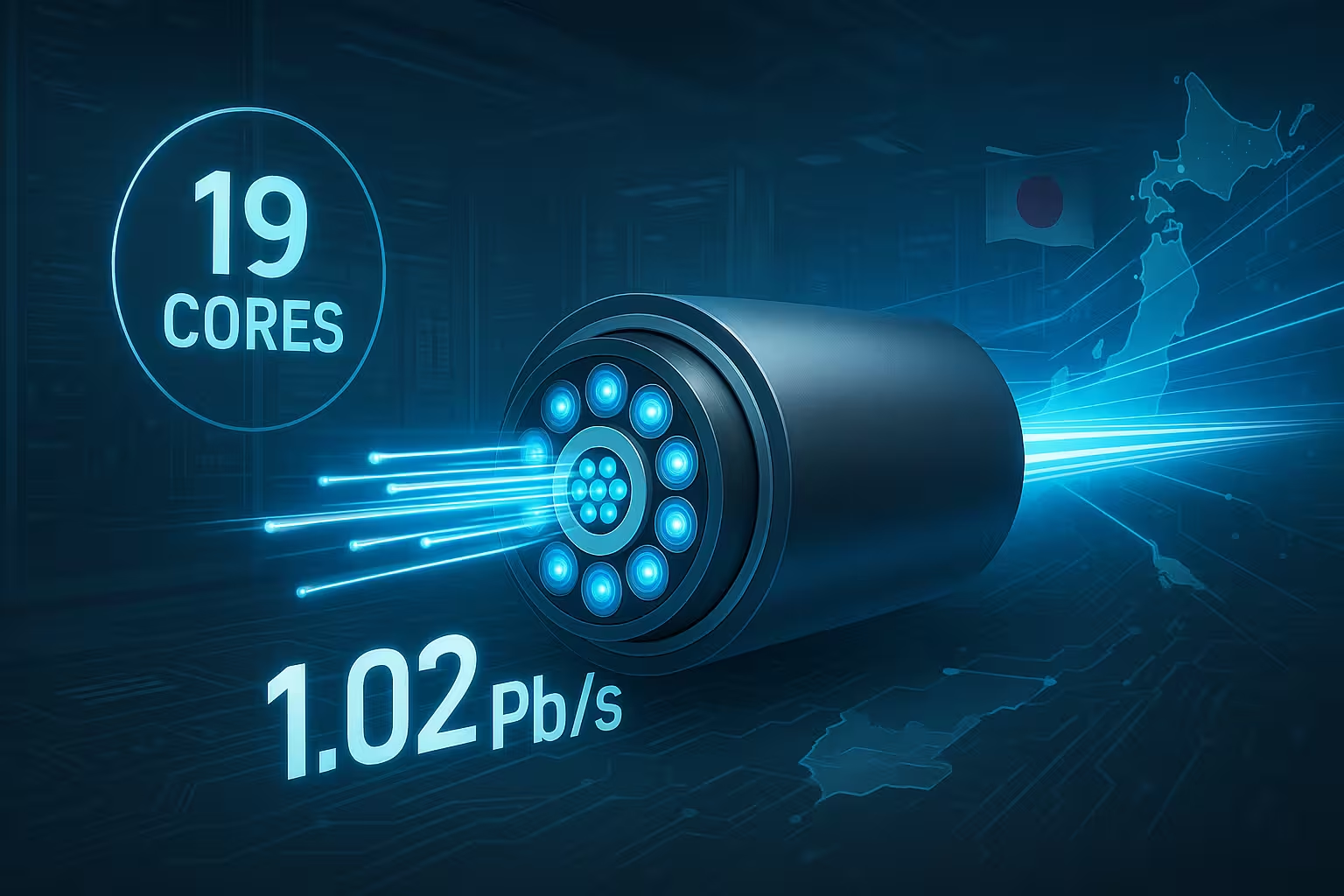Introduction
Imagine downloading the entire Netflix library or 10,000 HD movies in just one second. Sounds unbelievable? Japan just made it possible. With a groundbreaking innovation in fiber-optic technology, Japanese researchers have achieved an internet speed of 1.02 petabits per second (Pbps) — the fastest ever recorded using standard optical fiber dimensions. This astonishing feat is powered by a new kind of fiber optic cable that contains 19 separate cores, making it a game-changer in the world of data transmission.

In this article, we’ll break down the technology, how it works, and what it means for the future of global internet infrastructure. We’ll explain everything in simple terms, strictly following the guidelines of the writer course content guide, ensuring clarity, factual accuracy, and reader engagement.
Table of Contents
What Exactly Happened?
According to the National Institute of Information and Communications Technology (NICT) of Japan, researchers successfully transmitted 1.02 petabits of data per second using a fiber optic cable with 19 cores. To put it into perspective:
- 1 petabit = 1,000,000 gigabits.
- That’s 125,000 GB per second.
- It’s 3.5 million times faster than the average U.S. internet speed, according to TechRadar.
This milestone was achieved over a total simulated distance of 1,808 kilometers, using 21 loops of 86.1 km fiber within a lab setup. The transmission was carried out using a standard outer diameter fiber (0.125 mm), which means it could potentially be deployed using existing infrastructure.
What Is a 19-Core Fiber Cable?
Traditional fiber optic cables have a single core, through which light signals carry data. Japan’s innovation uses 19 individual cores, all enclosed in the same cable. This means it can send 19 separate data streams simultaneously, dramatically increasing capacity.
According to the official NICT report, these 19 cores are arranged in a hexagonal pattern, ensuring minimal interference and optimal performance.
Why This Matters
- More cores = More lanes on a highway.
- Multiple data streams travel simultaneously.
- Achieves ultra-high bandwidth without increasing cable size.
How Does It Work? (Explained Simply)
Here’s a breakdown in simple terms:
- Fiber Optics Basics: Fiber optic cables use light to transmit data. A laser beam sends light pulses down a glass strand, which carries information as binary code.
- Multi-Core Magic: In this setup, each of the 19 cores works like a separate highway lane. The system sends 19 beams of light at once, each carrying different data.
- Wavelength Division Multiplexing (WDM): They further divide each beam into different wavelengths (colors), allowing even more data on the same core.
- Amplifiers & Signal Boosters: Special amplifiers are used to keep the light strong over long distances.
- Decoders at the End: At the receiving end, special devices read the light signals, separate the wavelengths, and convert them back into usable digital data.
What Are the Real-World Applications?
This breakthrough opens the door to several possibilities:
- Faster Cloud Access: Businesses can access cloud data instantly.
- High-Speed Streaming: 8K or even holographic video could stream with zero buffering.
- Scientific Research: Enables handling massive data sets in AI, astronomy, and climate research.
- Smart Cities: IoT devices will require fast, real-time communication.
- Global Networks: Undersea cables could carry more bandwidth without needing physical upgrades.
According to UNILAD Tech News, this innovation might lead to “fiber cables carrying exponentially more data using existing infrastructure.”
Is This Available for Consumers Now?
Not yet. This experiment was conducted under controlled laboratory conditions using recirculating loops to simulate 1,808 km of transmission. However, since it uses the standard-sized fiber cable, telecom companies could adopt it faster than previously thought.
According to experts at NICT, the goal is to make this technology practical and scalable over long distances in the near future.
Why Japan Is Leading the Race
Japan has consistently invested in optical networking. From being the first to roll out gigabit internet nationally to leading R&D in photonic technologies, the country remains at the forefront.
This recent innovation reaffirms Japan’s commitment to pushing technological boundaries while keeping deployment costs in mind.
Conclusion
Japan’s 19-core fiber cable isn’t just a scientific marvel — it’s a blueprint for the future of global internet infrastructure. By achieving 1.02 petabits per second in a standard fiber cable, the researchers have shown us what’s possible when innovation meets real-world feasibility.
As countries look for ways to handle ever-growing data demands, Japan’s breakthrough might just be the solution the world has been waiting for.
Stay tuned, because the internet is about to get a whole lot faster — and Japan is leading the charge.
